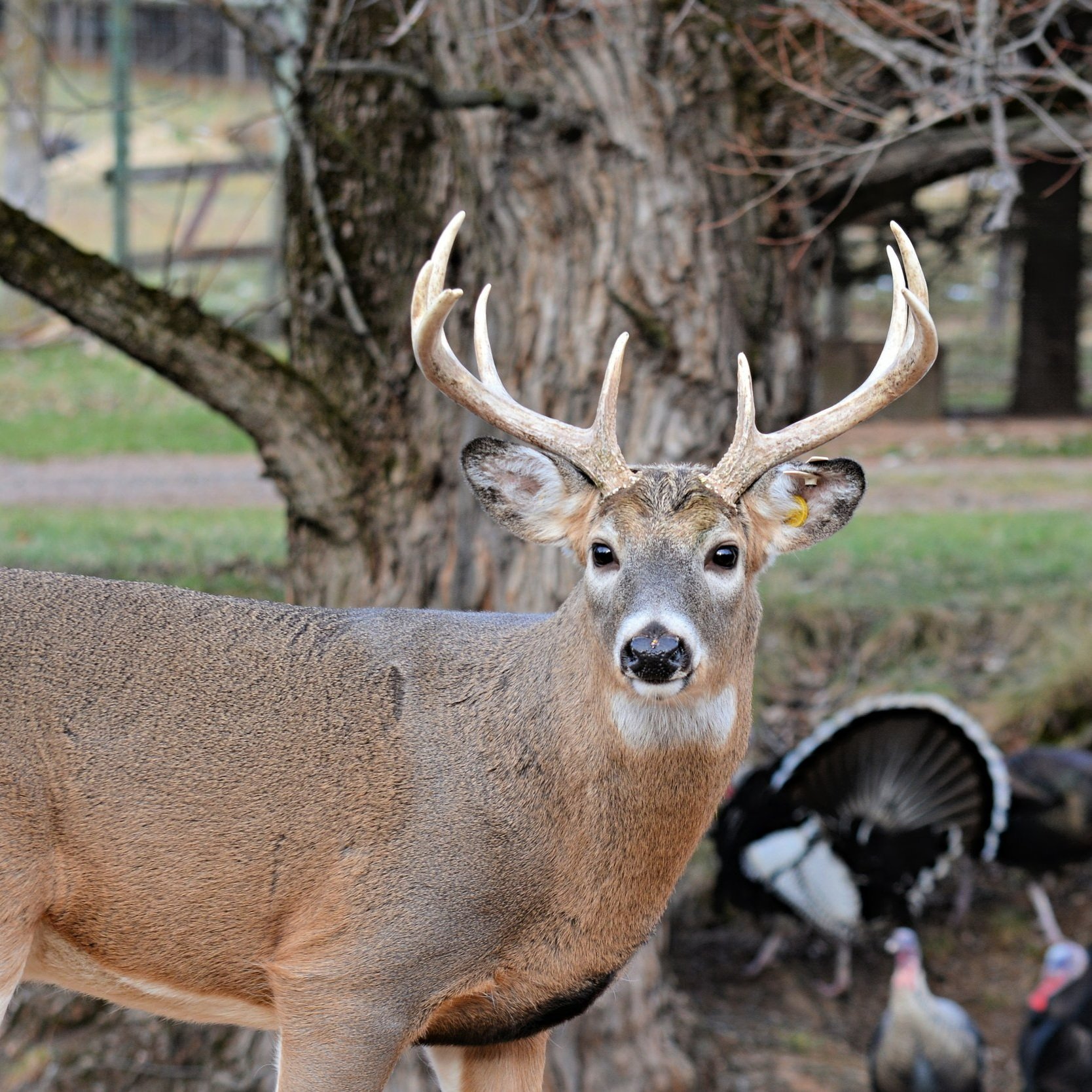
Meet our White-Tailed Deer Herd
White-Tailed Deer (Odocoileus virginianus)
Native Habitat: Found from southern Canada to South America, white-tailed deer are common in both urban and rural areas as they adapt well to living in close proximity to humans. Being highly adaptable, they utilize creek and river bottoms, forest plantations, croplands, mature forests, young forests, early successional vegetation, and urban areas. They typically prosper following prescribed fire, timber harvest, or other disturbances which produce new vegetative growth near ground level
Average Height: 2-3 feet at the shoulder
Average Length: 4.5- 6 feet
Average Weight: 100-200lbs (males), 80-160lbs (females)
Wild Diet: Whitetails eat a variety of hard mast (i.e. acorns, beech nuts), soft mast (i.e. blackberry, blueberry), forbs, tender parts of woody plants, fungi, and agricultural crops. In fall and winter, high priority foods include acorns, along with woody evergreen plants, herbaceous vegetation, and fungi. In the spring and summer, deer eat tender woody browse, a variety of forbs, and soft mast as it becomes available. Adults require 6 - 8lbs. of green food per 100lbs. of body mass daily.
Fun Fact: Fawns are occasionally discovered bedded down without their mother- this is perfectly normal. Because they lack the speed and strength to get away from danger, they move very little during their first few weeks. They rely on their lack of scent and spotted coat to camouflage themselves. Mothers distance themselves, except when it is time to nurse, to further protect their fawns by not giving their location away to predators.







